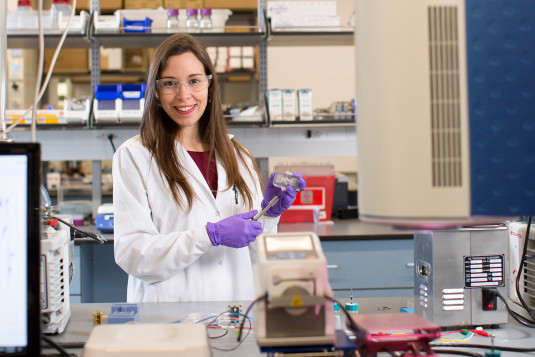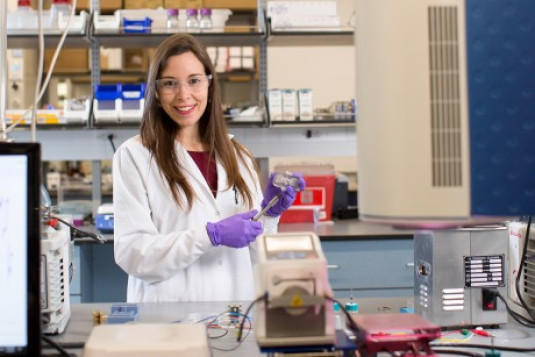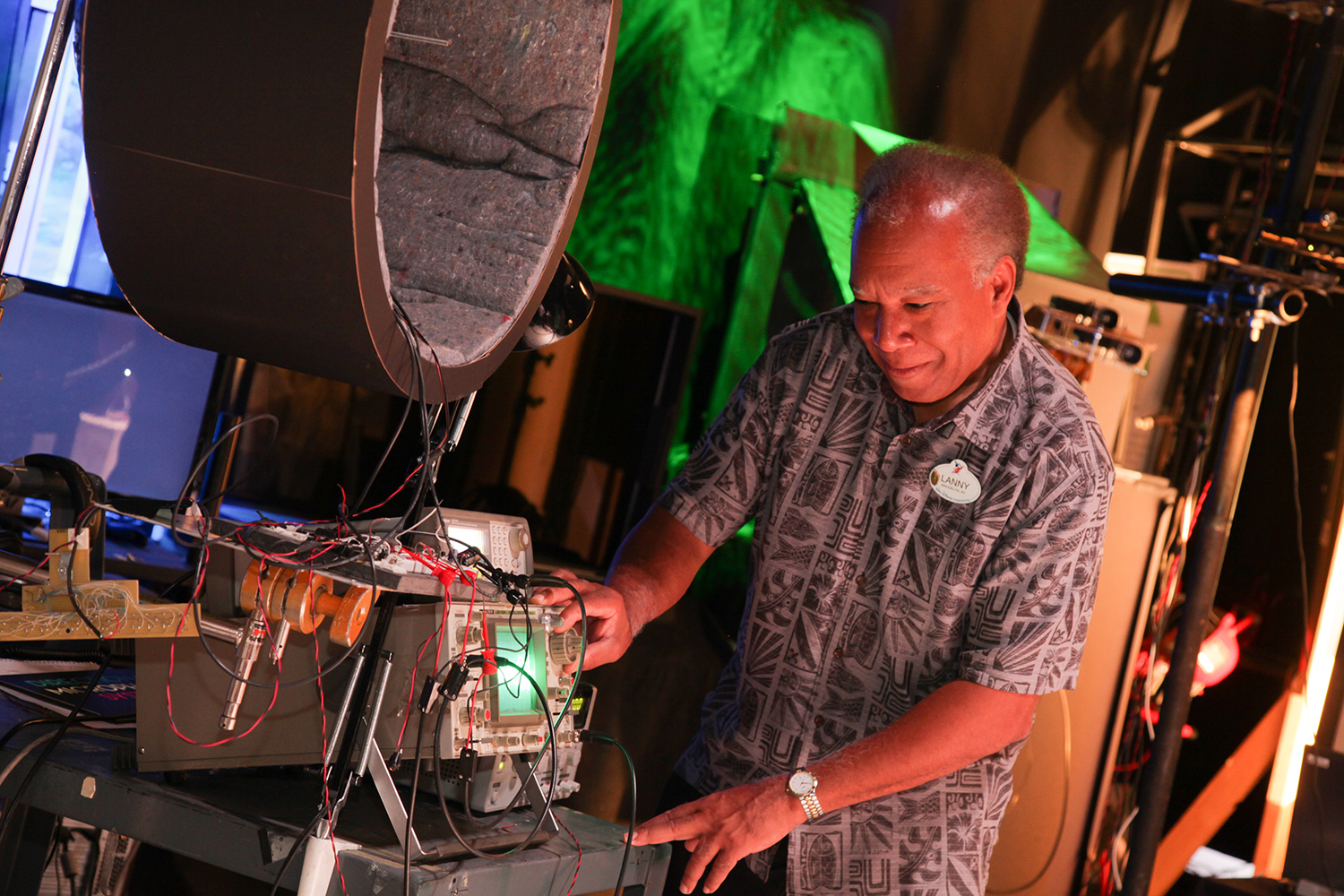
As if by magic
Lifelong inventor Lanny Smoot holds over 100 patents in multiple fields. Initially an engineer at Bell Laboratories, his early inventions focused on telephonic and fiber optic communication. As a current Disney Research Fellow and Imagineer, Smoot not only uses his creative talent to bring holodecks and lightsabers to life, but also many other fascinating ideas.
23 min read
Each month, our Journeys of Innovation series tells the stories of inventors or entrepreneurs who have made a positive difference in the world. Hear it in their own words or read the transcript below.
Lanny Smoot: In my earliest memory, my dad brought home a battery, a bell, some wire, and he got the bell to ring, and the light lit up, and he's wiring this on a tabletop. And I was like, what is this? My mind just, I, I have to do this!
Lauren Emanuel: From that point on, Lanny Smoot was determined to make inventing a permanent part of his life. With his father as inspiration, Smoot learned all he could about science and engineering, and he was eventually singled out by Columbia University for a full scholarship and a job at Bell Labs—a famous information technology and communications research company—as an engineer upon graduation.
Now a Disney Research Fellow and Imagineer with over 100 patents, Smoot calls inventing “an experience that's top of his life loves,” proving that his passion for innovation remains strong.
I’m Lauren Emanuel from the United States Patent and Trademark Office. I recently spoke to Smoot about his remarkable career. We discussed recent projects and some of his favorite patents—including his first.
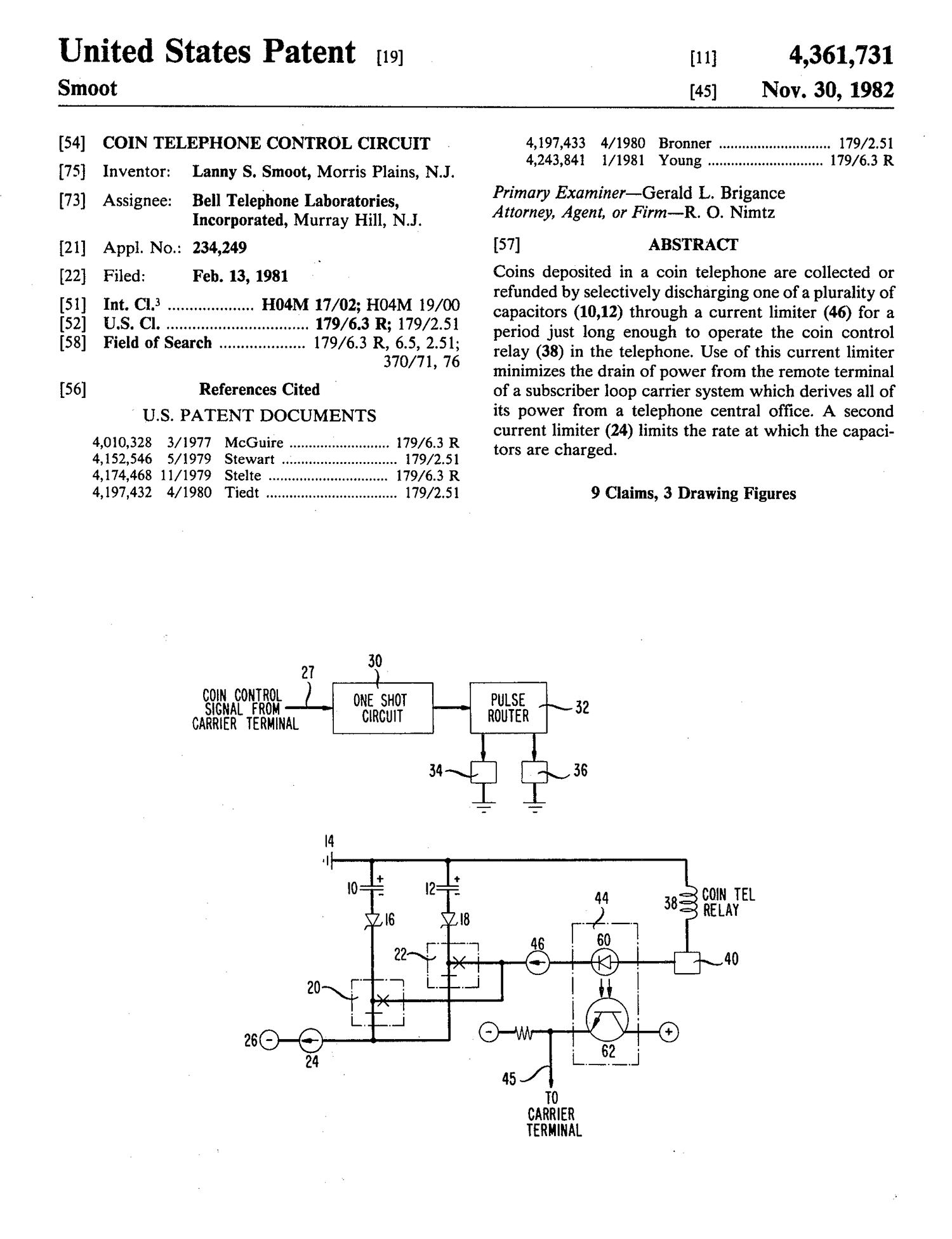
Smoot received his first patent, U.S. Patent No. 4,361,731, for a "coin telephone control circuit" in 1982. Above is the patent’s first page.
Lanny Smoot: My first patent had to do with supporting coin telephones in rural areas. Now, a lot of the younger folks listening to this may not even remember that you had to put a quarter into a box to be able to make a phone call. You couldn't just pull out your cell phone. And especially in rural areas, there was very little coin telephone service. And I found a way to stretch the ability to support coin telephones on existing wires and have multiple coin telephones independently operating on the same pair of wires, which saved both money, time, and got a vital service, which in some cases is an emergency service. I also developed the first optical fiber receivers that were used to convert the telephone system from its wired background, where all communications were on wires, to optical fiber. So, I made the first optical receiver that made that sort of thing possible. And some of my receivers are still in operation, some 30 or 40 years after.
Lauren Emanuel: Moving from advancements in telephonic and fiber optic communication, Smoot worked to develop video conferencing, which once seemed closer to science-fiction than the everyday convenience we now take for granted.
Lanny Smoot: We walk into rooms now and see big screen video conferencing systems and we see people life-sized and we take for granted, as we're doing right now, that the audio’s gonna work. Back then, there was no industry of video conferencing. Most people were still on phones. There were some very specialized video conferencing systems. They didn't work well. They were on small screens. The audio was also very glitchy. I came up with a design that produced very large video images—life-sized images. We particularly built our systems into walls and set up rooms that were similar on both ends of a call. So, it was like looking through an open window to see the participants on the other side of the, of the room.
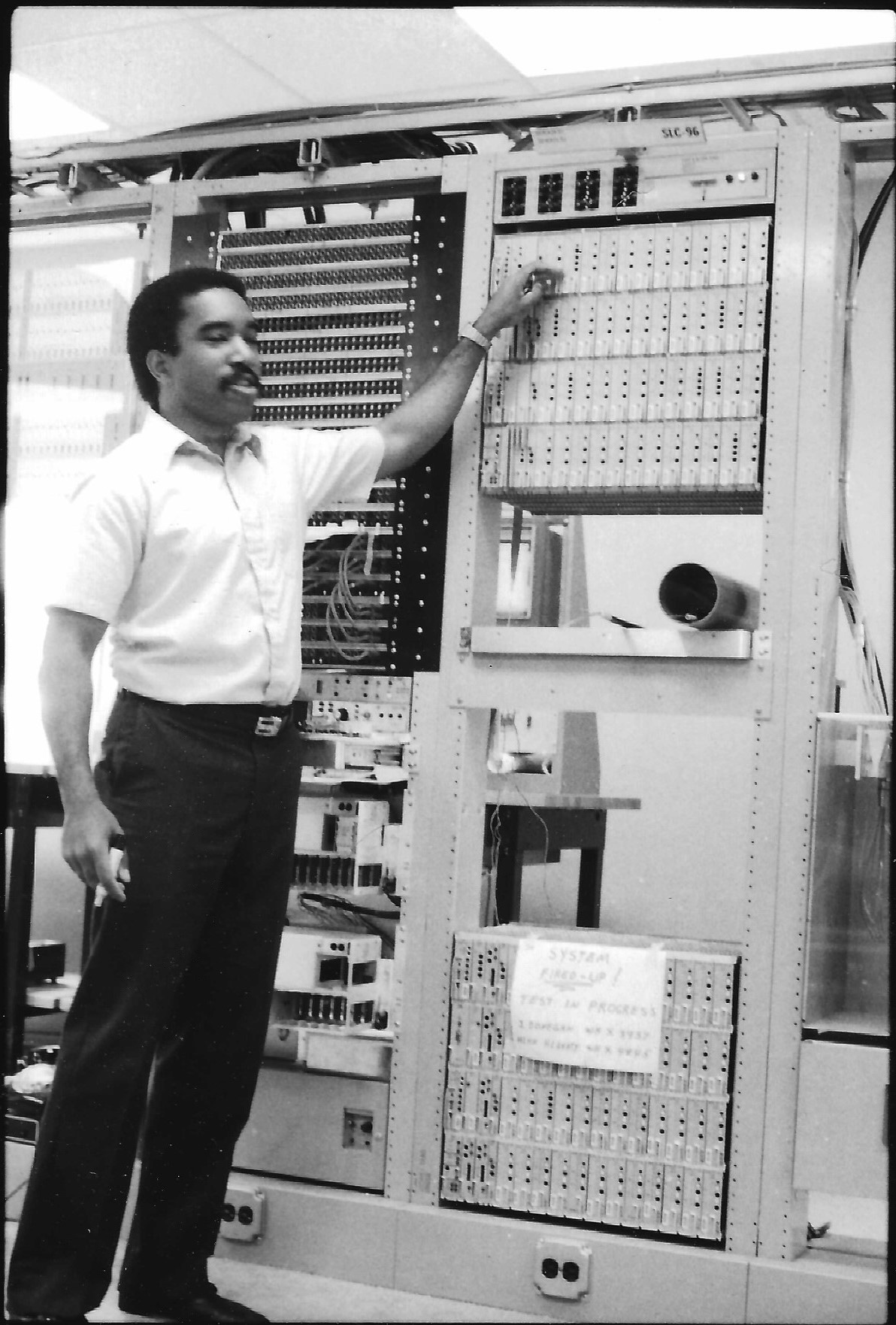
Smoot tests the fiber optic system at Bell Laboratories in February 1984. (Photo courtesy of Peraton)
We also concentrated on the audio. We had some of the best multichannel audio systems. So, I could tell where a person was sitting on the other side of the extended room. We also made it so that we could show graphics on the system by just putting a piece of paper or whatever you wanted to show on the table. The image was looked at not from the top of the camera, but through the surface of the table, from the bottom and through the paper. That system became a model for a lot of the video conferencing systems that were used inside the telephone network, and we licensed the technology to others in the industry so that they could also use it. So, it was fun. It was impactive. And, um, it changed, I think, the world of video conferencing.
We all watch streaming, you know, TV now. We think nothing of being able to stop an image from playing, rewind, have a large selection catalog of movies and things that we can see.
That didn't exist, and I created—along with partners—the so-called store and forward video-on-demand system, which meant we sent the images to homes with the ability to rewind them, fast-forward them; it was the first video-on-demand system demonstrated in the Bell system. So, I was really proud of that.
And I had a, another invention which is kind of funny. It didn't catch on, but I had the dream that we should be able to control what we're looking at when we watch television. And we called that the electronic panning television system, and we patented it. It turned out that it was even a little advanced for the network at that time. We couldn't quite pull it off. We, we built prototypes, but it didn't go broadly. I still want that to happen.
Lauren Emanuel: So that would mean, so we're basically acting as the camera then, right?
Lanny Smoot: We are the camera director. And the way we did it is our cameras that were actually at the scene were omnidirectional. They took in all images, all views, et cetera. And what you were really doing is sending a signal into the telephone network to select the view that you want to see. All views were always available, and the big deal was everyone could be controlling their view through that system independently.
Lauren Emanuel: Which means everybody is watching the same event, but they're seeing their own personalized view of it.
Lanny Smoot: That's right. Exactly.
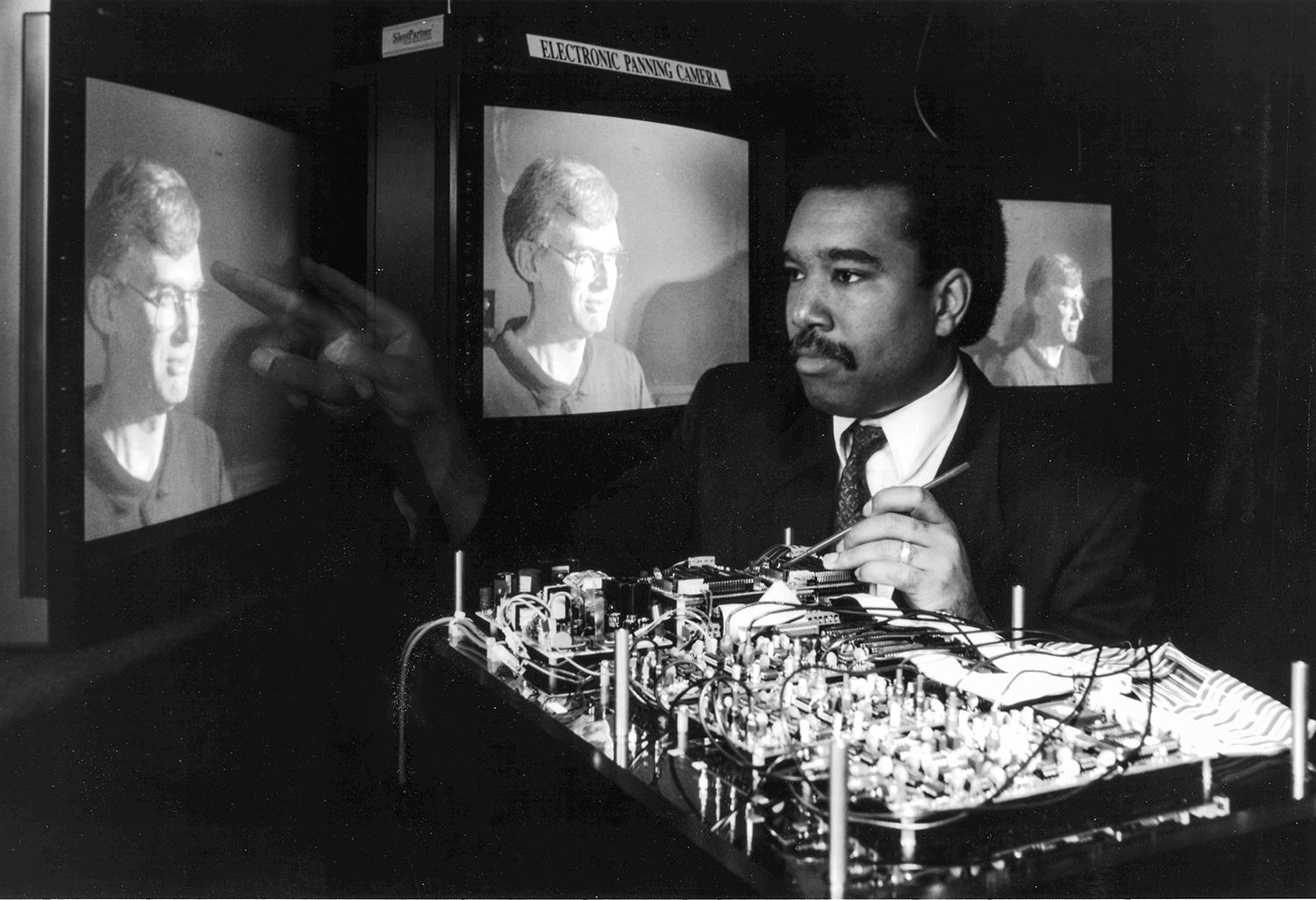
Smoot demoes an electronic panning camera in 1993. His vision is that one day, television audiences will be able to control their own view of what they are watching through omnidirectional cameras at the scene. (Photo courtesy of Peraton)
Lauren Emanuel: That specific invention—as fun as it would be—has yet to gain traction. However, Smoot’s been able to integrate omnidirectional elements in other projects.
Lanny Smoot: I'll start by saying I was a fan of the television series “Star Trek” when I was a kid. And they have a wonderful room called a holodeck that you can walk into, and you can be anywhere in the universe. And the visual part of it, we kind of have ways of doing it with virtual reality glasses, et cetera. But if anyone has ever worn virtual reality glasses at home, you walk around, all you do is trip on the furniture, right? So, what if you could go into a room and you and everyone else in the room is able to walk in any direction they want and independently have their own virtual view of the world. So, you're in a room, you're walking around. You think you're on the streets of Paris. I'm in that same room, and I think I'm walking around on the surface of Mars. How can that possibly be?
I must have some sort of floor that allows everyone to walk on it in an unlimited way and not hit anyone else on the floor. So imagine a floor, the entire floor, being an omnidirectional treadmill. As I am in one part of it, my part of the floor will either move me along—it sort of looks magical when this is operating—or if I take steps on the floor, the floor can hold me in the same place. It's sort of moving under me.
We are what we can see, right? If we can see someone else do something, it can light a fire in us to do it.
Lauren Emanuel: I'm sensing that overlap, right? Like another unique experience. You're in the same, same spot as other people.
Lanny Smoot: I think, you know, I think inventors are kind of like that. We run in, we run in some grooves that I want everyone to have the most freedom when they're viewing, hearing, walking, et cetera. Just yesterday, I mentored at an organization for young kids that we want to become more interested in careers in the engineering and sciences fields. I do a lot of that. I think it's super important.
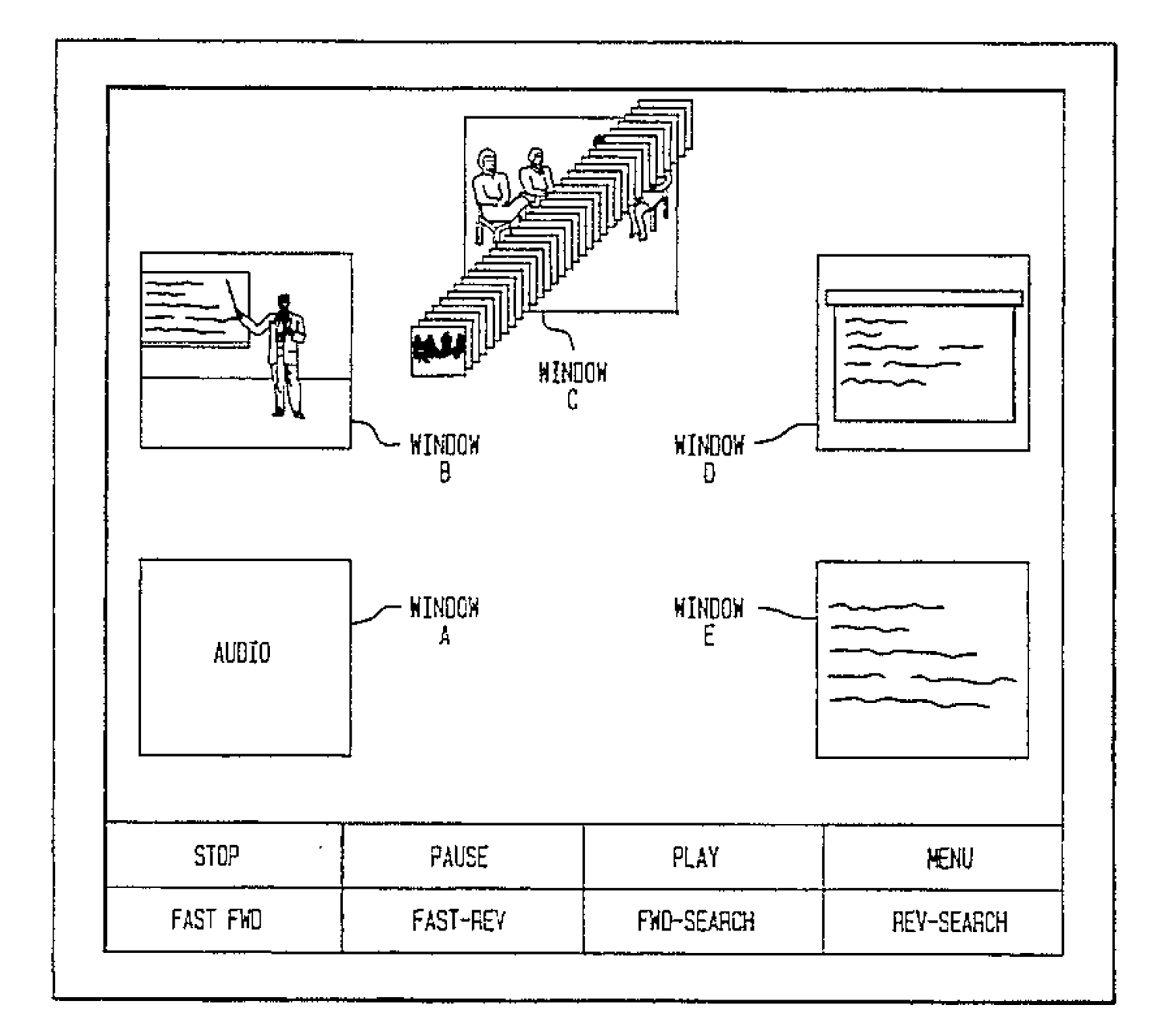
On March 18, 1997, Smoot received U.S. Patent No. 5,613,032 for a "system and method for recording, playing back, and searching multimedia events wherein video, audio, and text can be searched and retrieved." The above drawing is figure 7c in the patent.
When I was coming up, I had never met an engineer. Certainly not a Black engineer. And my role models were actually the science folks on “Star Trek”: Nichelle Nichols, who played Uhura, and the fellow who played the Barney Collier engineer on the old “Mission: Impossible” series. If you're a senior person like me, you may remember that old series, but he was the engineer and always saved the rest of the team because of his knowledge of technology. So, you know, we are what we can see, right? If we can see someone else do something, it can light a fire in us to do it.
Lauren Emanuel: Smoot experienced that firsthand. He had the chance to collaborate with Jim West, a prominent Black inventor he greatly admires. A respected acoustic scientist, West holds many honors, including the National Medal of Technology and Innovation and induction into the National Inventors Hall of Fame.
Lanny Smoot: Jim West is a hero of mine. I'm an African-American obviously, and Jim is African-American. Jim, at the time, had already invented the electret microphone. It's the most commonly used microphone in the world. We knew he was the best person to design audio systems, and we kind of borrowed him from Bell Labs. And we partnered in building this video window system with the best, most directional audio in the world at that time. And we had a ball doing it. Jim has always been my hero. And he's got a lot of patents also and a very, very amazing guy.
Lauren Emanuel: To learn more about West, read our Journeys of Innovation article, “Going beyond the Horizon.”
Just as the video window system benefitted from the expertise of multiple people, Smoot realized early in his career the importance of sharing technical knowledge between teams that would not normally interact.

In addition to theme park attractions, Smoot’s work has also contributed to Disney Cruise Line projects. Here on the Disney Dream, children play on the Magic PlayFloor, a large interactive floor that changes what displays based on the children’s movement. This project incorporates Smoot’s ongoing desire to give everyone as much freedom as possible in their experiences. (Photo courtesy of The Walt Disney Company)
Lanny Smoot: I started the collective effort management development program (CEMDP). When I joined Bell Labs, there weren't many African-American engineers at the company, but we realized something, which was that we were embedded in different parts of the company. Some of us were in military research. Some of us were in telecommunication. Some were doing different things. And collectively, we knew a lot about the company, and I thought it would be really cool if we gave a series of technical talks to each other. So each week, one of us would talk about what we were doing in a specific area. And I think our managers were surprised when, you know, Lanny, how did you know how, you know, how well we're doing in another part of the company? Or how did you bring that technology into our organization and make it better?
It's because I had that sort of leg up of our network of engineers that could share information very broadly, even between locations. Bell Labs was located in several places in New Jersey prominently. And we were able to share information from all of those locations, and each of us knew everything that all of us knew.
Lauren Emanuel: I think that's a good model for anywhere. Knowledge sharing amongst teams to make sure everyone knows what's going on.
Lanny Smoot: Exactly. We don't do enough of it. And now we have better tools, so no excuse for it.
Lauren Emanuel: So, let's talk about what it was like for you growing up and getting started on this path.
Lanny Smoot: I grew up in Brooklyn, New York which is, uh, was a tough neighborhood then, still kinda tough, not a lot of money. My parents did not make a lot of money. They loved me dearly, but couldn't really help me in school and that sort of thing. But my dad started me off, absolutely, in the entire career that I've had to date. He could fix everything, including televisions, without specific training and just all sorts of things. In my earliest memory, my dad brought home a battery, a bell, some wire, and he got the bell to ring, and the light lit up, and he's wiring this on a tabletop. And I was like, what is this? My mind just, I, I have to do this!
Lots of African-American youth are certainly smart, but are often not aware of the opportunities that are available to them in terms of going to school and scholarships.
Lanny Smoot: So, it started me on a career of doing every science fair possible, going to the right schools. I wound up going to Brooklyn Tech for high school, wound up getting scholarships, a full ride to Columbia University, all because of the start that I got there and watching “Star Trek” and other things just to get inspiration.
My father was a wonderful guy. My mother was, too, but he was the technologist. She was the nurturer and the person who said, “Whatever you want to do, be happy.” When I was a kid, he was certainly the master, and I was the learner, and I loved it. By the time I was a young teenager, I had more scholastic input. I studied more. I knew how electronics worked. So, things that he would be doing by experience and some luck, I could say, "Dad, it's the resistor here that's failed." I have to give my father such credit. As soon as he knew that I knew this stuff, he was like, “You're on your way.”
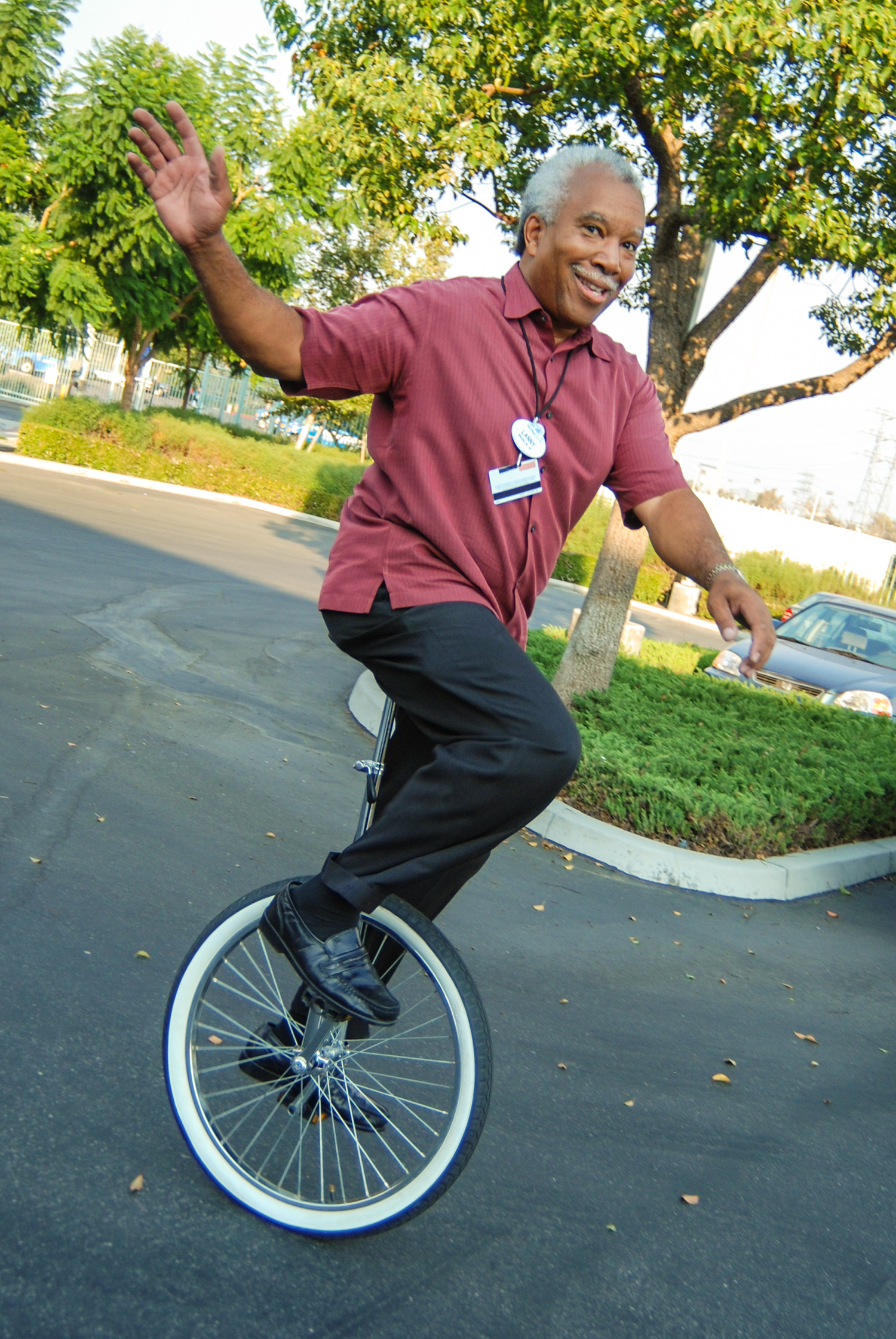
Smoot was a creative child. After seeing a unicyclist on television, he decided to build his own unicycle because his parents could not afford to buy one. He cut off the front wheel of an old tricycle, put a pipe and bicycle seat on it, and learned to ride. Seeing his son’s determination, Smoot’s father soon bought him a unicycle as a surprise. He still unicycles to this day. (Photo courtesy of The Walt Disney Company)
I won a Brooklyn borough-wide science fair, and I was missing a particular component. And this was when I was like, I couldn't drive, I guess I was 13 years or 14 years old. And um, my father didn't know where to get the component, but he says, “I will get it for you.” It almost tears me up. He says, "I will, I'll scour the world." We had like a day before the science fair. He left, you know, comes back hours later, "Here!" He would do anything to make sure that I succeeded and was super supportive when I surpassed his knowledge in the field.
It's my parents that started me in this field. Some guidance counselors along the way. So for instance, when I was going to make a decision, I just finished junior high school. I was in good classes, and I was going to go to George Westinghouse High School in New York, which is a fine school, which teaches people to basically be in the trades—be, for instance, an electrician. The guidance counselor said, "No, Lanny, that's not for you. You want to go to Brooklyn Tech. That trains people to be engineers and scientists and that sort of thing. That's where you need to go." So I took the test, and I was accepted at Brooklyn Tech. And that was also a great opportunity because it led to scholarships.
Lots of African-American youth are certainly smart, but are often not aware of the opportunities that are available to them in terms of going to school and scholarships. And the reason I started at Bell Labs was because of an engineer who had a program there that was providing scholarships for young kids with promise and particularly trying to bring more Black engineers into the field.
And one day I was sitting in my high school class and I hear coming over the public address system, "Will Lanny Smoot come to the Principal's office?" What could I have done? And in the Principal's office was a gentleman named Jim Stewart, who said, "Lanny, we've been looking for you. We've had recruiting trips to Brooklyn Tech. You've never come to any of them. We've heard about you.” And he just read the Riot Act, and I'm a kid. I, I'm like, “Oh, I'm so sorry.” I got a lot less sorry when he said, "Hey, I think we can offer you a scholarship to Columbia University. We will have you working each summer during your time through college. And if everything works well, we'll hire you as an engineer when you graduate." I did that. And I went back—on Bell Labs—and also got a master's degree in electrical engineering.
Success in life, I think, is being prepared for opportunities.
Lanny Smoot: We always need to be aware of the opportunities that we have. And one of the things I try to do, as an African-American engineer, is to make sure that young kids that were like me, that were smart and capable, but just unaware of the things that they could be doing and the folks that can help them and make them more aware of that.
Success in life, I think, is being prepared for opportunities. And I thank the people who made me aware of those opportunities in life that allow me to have 102 patents* and have invented a lot of stuff.
Lauren Emanuel: So we are the Patent and Trademark office, so we need to talk a little bit about intellectual property. Why do you think it's been so important for you to receive patents for your inventions?
Lanny Smoot: Well, it's been important for me and for my companies. I will tell you most people think a patent is a right to do something. It's actually a right to stop other people from doing what you are doing. I'll go back to Bell. When I designed that optical receiver, at the time, that was the thing that allowed fiber optic transmission. Other companies were trying to compete with the Bell system, coming up with different products, et cetera, but we had the most sensitive optical receiver. One that could withstand the most optical power, was immune to optical overload, the most robust one. And we want to protect the right for the Bell system to make this as opposed to a competitor. So a patent has a competitive advantage.

Smoot works on the fiber optic receiver at Bell Laboratories, circa 1981. (Photo courtesy of Peraton)
Lanny Smoot: Now, if you work for companies, you do assign the patents to the company and they protect that intellectual property. And also, they can extend your ability to see your dream. Some of the things I've invented would cost a lot of money to bring to pass. And companies can take those ideas, build them large, larger than a single person, and you get to see that dream come true. I always joke, you know, is it invention for fun and profit? For a person who's at a corporation, it's mostly for fun, but the profit is that you are well-respected, that you know the company's moving forward, and they reward you financially for bringing that intellectual property to them.
So patents protect you against having someone else take an idea that you've spent time to develop and them developing it and selling it.
A good idea, a really patentable idea, should sound almost obvious to the person who reads it.
Lauren Emanuel: Applying for and receiving a patent is a critical step in the innovation process, but it all begins with something else: an idea.
Smoot shared that he’s constantly coming up with new ideas so that when inspiration strikes, he’s ready to bring his best ones to life.
Lanny Smoot: I am a hands-on engineer. What I find is one idea leads to another idea, leads to a better one, et cetera. I have notebooks right next to me right now that I'm always scribbling in. I try to think about how I would solve that new question myself, and I'll jot down a bunch of ideas. Then, I'll kind of cheat and say, “Well, let's see how other people have done it.” And so I'm already familiar with the thought process that would be required to solve the problem.
I might see other people trying it to solve it unsuccessfully, but now I know what doesn't work. Then I'd say my ideas are unique enough that I want to push. I have a whole thought process on this. First of all, people say, "Oh, that was so simple. I could have invented it." Then I say, "Why didn't you? Why didn't you stop and think and develop it and do it?” A good idea, a really patentable idea, should sound almost obvious to the person who reads it.
But a lot of people don't take the time to look at a problem and see how you could make it better, how you could fix that problem, how you could solve it. Once I'm really into it, I do dig deeply to make sure that I understand the entire area of science around it. Then, I go to work.
Invention sort of bounces around. And I also think that a solution in one field often has an analogous invention in another field.
Lanny Smoot: I have two labs. I have a lab at home, which is pretty much the whole house, and I have a lab at work. The place becomes a total wreck. I'm pulling things apart. I have bins of parts that I know that I will need. But the thing in the middle is like gleaming. You know, it's the thing that's coming out of all of this chaos. I’m excited, I take a breath, and I clean up.
I’ve never liked the term tinkering. I already expect the thing that I'd been thinking through quite a bit and studied is going to work. And nine times out of 10, it works the way I think, which is pretty good, I think. The one time it doesn't, I totally learn. It's like, oh, I missed something here. That can lead to another invention. Like, huh. It didn't work. Wow. I'm, I'm not disappoint—I am disappointed because I wanted it to work—but that, that's the challenge then like, why? Oh, you know, I see, this is what I was missing. That's a new idea.
Invention sort of bounces around. And I also think that a solution in one field often has an analogous invention in another field. So something that works in electricity might work in water power. In terms of water flows in pipes, it's like electricity in wires. And so I think inventors see the connection and similarity between different areas and different problems.
We continue to improve the world with the union of science, technology and, with Disney, art. I'll give you an example. There is an attraction called Where's the Fire. It was where you used flashlights to see through walls to find new things. My version of it looked very rough. You know, it was on lab benches and cameras hanging out and optical stuff. I now get to work with very talented creative people who say, “Uh, it works. We'll make it look good. We'll make it so that people want to touch it. That looks like I'll be electrocuted if I, if I do that.”
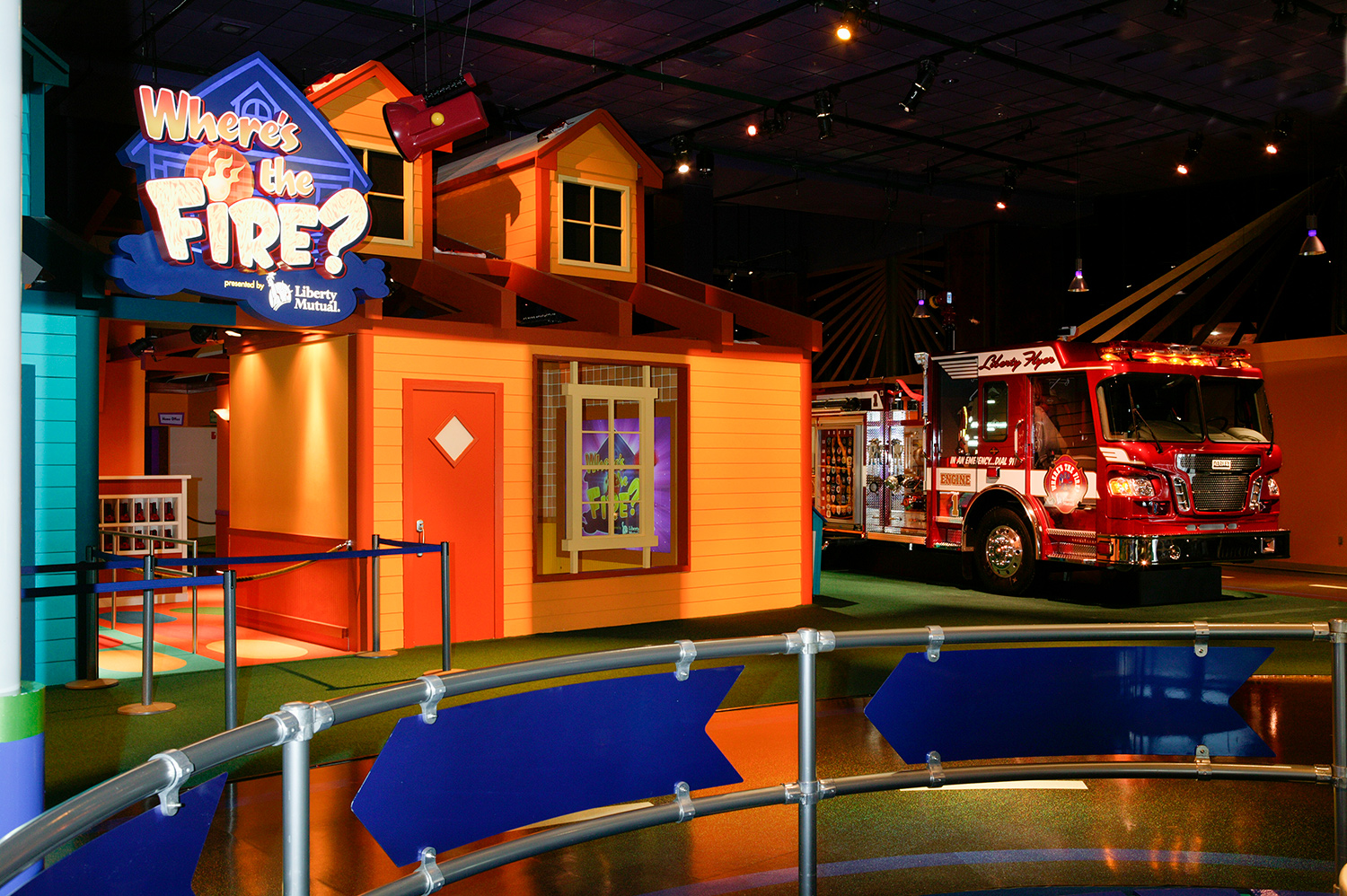
Where’s the Fire was part of Innoventions, a former group of exhibits at EPCOT in Walt Disney World, Florida. (Photo courtesy of The Walt Disney Company)
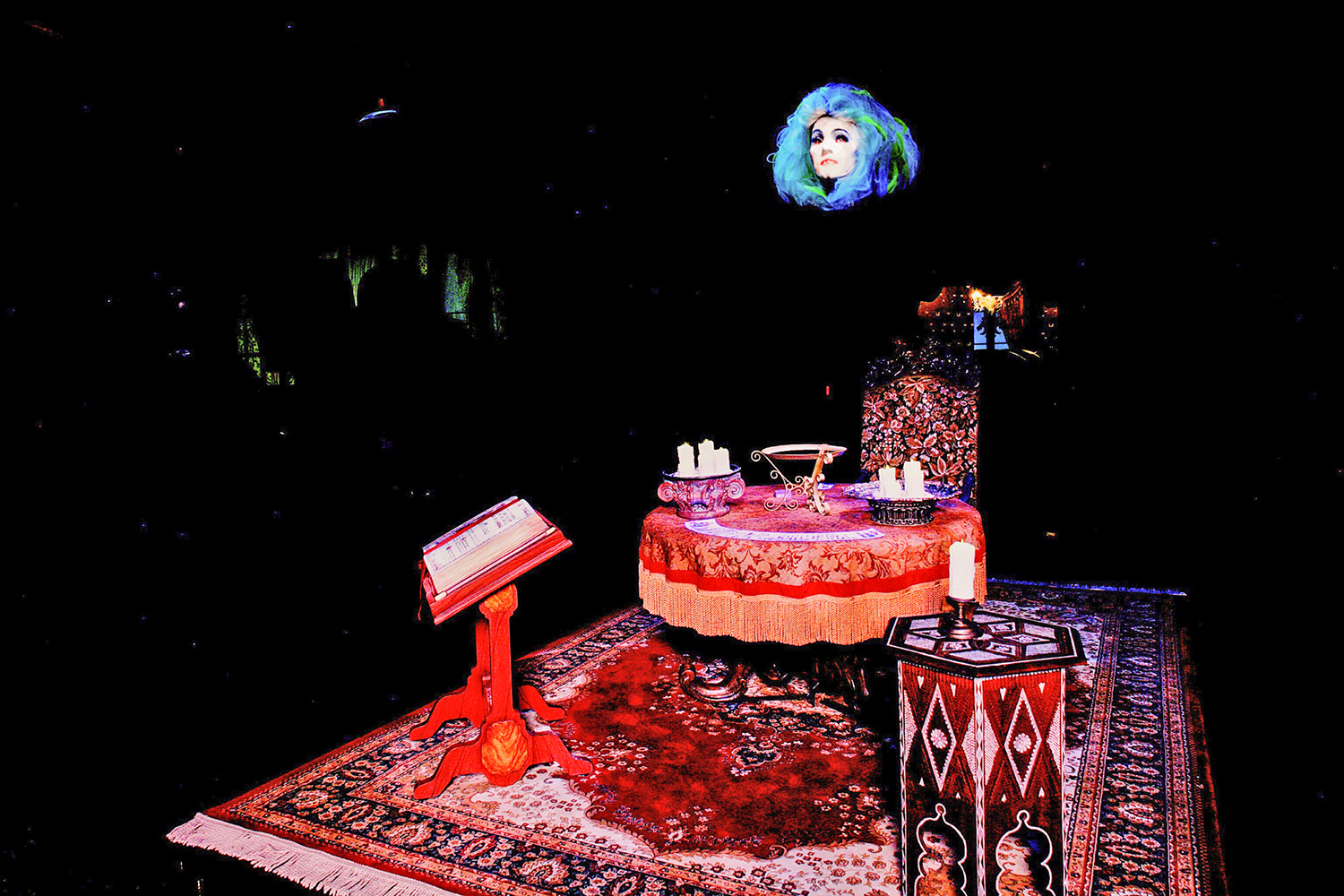
Smoot contributed to the effect that causes Madame Leota’s head to float in the Haunted Mansion. This eerie attraction is located at both Walt Disney World and Disneyland. (Photo courtesy of The Walt Disney Company)
Lanny Smoot: I just want to put in a little plug for Disney, which is that not only does the company support invention—and we do real science, our research is right up there with the research of any of the other big tech companies—but we have that one advantage, which is that we have creative people, artists, modelers, sculptors, architects, who can take that technology, wrap it in a world of wonder and beauty and make an attraction.
Lauren Emanuel: That's actually a really good segue to “Behind the Attraction,” the show on Disney+ where you're in a few episodes. You emphasized how, you know, it's hard to make things better while protecting what people love about an attraction.
Lanny Smoot: I mean, you know, Disney is a multi-generational family affair. Lots of people who are now getting older were taken to the parks when they were kids. And those people who are now adults say, “I want to see the Haunted Mansion looking pretty much like I remember it as a kid so I can share that exact experience with my child that I'm taking to the parks today.” So, we did a little bit of a revamp on some of the technology in the Haunted Mansion, but we had to use that technology in service of making the old dream the same, but just better and a little bit easier to maintain. We sometimes work really hard to make something look old. If you're in the Haunted Mansion, nothing should take you out of that old world sort of creepy feeling.
Lauren Emanuel: So, looking back on all of—on the impact—of your inventions, what would you say you're most proud of?
Lanny Smoot: You know, it's almost like talking about what is the most, what child, do you like the most? If I talk about impact, I think the video-on-demand work, and some of those things I did at Bell, just because they are outward-facing into the world. The video window teleconferencing system became the model for the way we do video communications nowadays. Providing people the ability to have a streaming video, I think was really important.
The work that I'm doing in that holodeck, I think is really super important. And, some fun things. I don't know if you've seen Disney's new lightsaber. We have the best, most realistic extendable and retractable lightsaber, and that's one of my patents along with other people who worked on it. Just realizing that, you know, you can be part of a Star Wars lore to some extent I think is really cool. I've also made it possible for you to battle against a training droid, so that you can be a Star Wars character, where the droid is trying to blast you and you can actually fend off laser blasts just like Luke Skywalker did. And that will be in the Star Cruiser experience coming to Disney World.
Practice what you love. I was lucky enough to find it early. But as soon as you latch onto something you love, do it, and do it a lot.
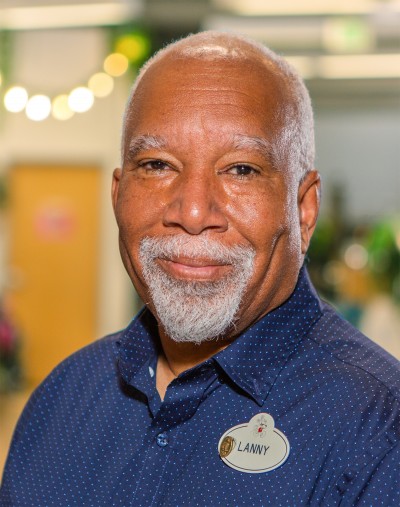
(Photo courtesy of The Walt Disney Company)
Lauren Emanuel: What would you tell other innovators? What does it take to be an inventor? And what advice would you give them?
Lanny Smoot: Inventing takes curiosity, the desire to see something that's in your mind emerge into the world, and a certain amount of something I haven't mentioned earlier is confidence and bravery. When you come up with something that's new, some people will understand it and get it. Other people will say, “I'm not sure if I understand what you're saying,” or “Do we really need that?” But if you're a new inventor, you may not have enough confidence to stick with it. Be brave, be courageous.
You know, the Wright brothers, people said heavier than air, you know, vehicles flying. It's just not going to happen. When they started, they knew that they were going to build an airplane. They knew that they were going to do it. And they knew that it would work. Their confidence through thick and thin carried them along. Practice what you love. I was lucky enough to find it early. But as soon as you latch onto something you love, do it, and do it a lot.
Lauren Emanuel: Smoot’s story is a powerful example of what can happen when you are able to do something you love. Inspired to invent as a child, Smoot’s innate curiosity and desire to learn—combined with his enthusiasm, dedication, and talented colleagues—has led to over 100 patents in multiple fields, from electronics and optics to motors and machinery.
Smoot’s story is also a reminder that we often achieve success through the help of others. As Smoot’s father and guidance counselor proved, you never know when a life-changing opportunity will come your way—but you have to be prepared to take it. And every now and then, we might become that opportunity for someone else.
From the USPTO, thanks for listening.
Join us for a live conversation with Lanny Smoot at 2 p.m. ET on February 17 during the 2022 Black Innovation and Entrepreneurship program, part one: Defining tomorrow.
Credits
Produced by the USPTO Office of the Chief Communications Officer. For feedback or questions, please contact inventorstories@uspto.gov.
Interview by Lauren Emanuel. Audio editing by Jay Premack. Story production by Lauren Emanuel. Photo on the USPTO homepage and the top of this page courtesy of The Walt Disney Company. All other photos credited in the captions.
*At time of publication, Lanny Smoot held 103 patents, not 102 as mentioned in the interview.
References
Frontado, Jonathan. "Kids Can Enjoy High-Tech Fun and Games Aboard the Disney Dream with Magic PlayFloor.” https://disneyparks.disney.go.com/blog/2011/03/kids-can-enjoy-high-tech…
Reifsnyder, Frank. “Imagineer and Disney Research Fellow Lanny Smoot Receives his 100th US Patent.” https://disneyparks.disney.go.com/blog/2021/08/imagineer-and-disney-res…


